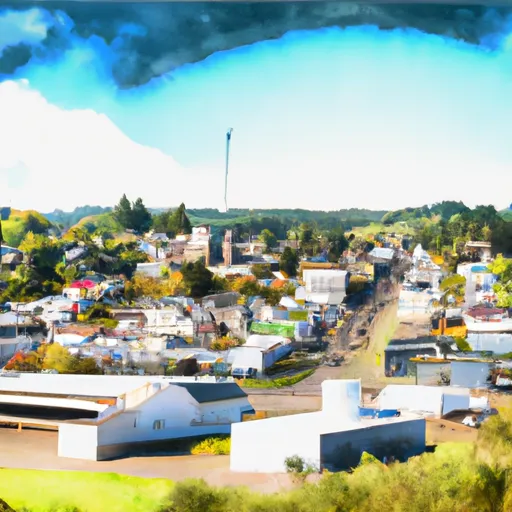-
 Snoflo Premium
Snoflo Premium
Get unlimited access to all our content
With no Ad interruptions! - Start Your Free Trial Login with existing account
Winlock
Eden Index
Climate
8.1
•
Recreation
3.4
•
Community
2.6
•
Safeguard
5.1/10

Winlock is a small city located in Lewis County, Washington. It experiences a temperate climate with mild summers and cool, wet winters. The average temperature in July, the warmest month, is around 70°F (21°C), while January, the coldest month, sees temperatures averaging around 39°F (4°C). The region receives a significant amount of rainfall throughout the year, with an average annual precipitation of approximately 60 inches (152 cm).
Winlock is surrounded by several water bodies, including lakes, rivers, and creeks. The nearby Cowlitz River is a prominent hydrological feature, providing recreational opportunities such as fishing, boating, and kayaking. The river is known for its abundance of salmon and steelhead.
Outdoor recreation enthusiasts can explore the beautiful natural surroundings of Winlock. The city is situated near the Gifford Pinchot National Forest, offering opportunities for hiking, camping, and wildlife watching. The nearby Mount St. Helens National Volcanic Monument provides a unique experience for visitors interested in geology and volcanic activity, with various trails and viewpoints to explore.
Overall, Winlock's temperate climate, abundant water resources, and proximity to natural areas make it an attractive destination for outdoor recreation enthusiasts.
What is the Eden Index?
The Snoflo Eden Index serves as a comprehensive rating system for regions, evaluating their desirability through a holistic assessment of climate health, outdoor recreation opportunities, and natural disaster risk, acknowledging the profound impact of these factors on livability and well-being.
Climate Health Indicator (CHI): 8.1
Winlock receives approximately
1225mm of rain per year,
with humidity levels near 88%
and air temperatures averaging around
11°C.
Winlock has a plant hardyness factor of
8, meaning
plants and agriculture in this region tend to thrive here all year round.
By considering the ideal temperature range, reliable water supplies, clean air, and stable seasonal rain or snowpacks, the Climate Health Indicator (CHI) underscores the significance of a healthy climate as the foundation for quality living.
A healthy climate is paramount for ensuring a high quality of life and livability in a region, fostering both physical well-being and environmental harmony. This can be characterized by ideal temperatures, reliable access to water supplies, clean air, and consistent seasonal rain or snowpacks.
Weather Forecast
Streamflow Conditions
Lower Columbia
Area Rivers
Lower Columbia
Snowpack Depths
Lower Columbia
Reservoir Storage Capacity
Lower Columbia
Groundwater Levels
Recreational Opportunity Index (ROI): 3.4
The Recreational Opportunity Index (ROI) recognizes the value of outdoor recreational options, such as parks, hiking trails, camping sites, and fishing spots, while acknowledging that climate plays a pivotal role in ensuring the comfort and consistency of these experiences.
Access to outdoor recreational opportunities, encompassing activities such as parks, hiking, camping, and fishing, is crucial for overall well-being, and the climate plays a pivotal role in enabling and enhancing these experiences, ensuring that individuals can engage in nature-based activities comfortably and consistently.
Camping Areas
| Campground | Campsites | Reservations | Toilets | Showers | Elevation |
|---|---|---|---|---|---|
| Stan Hedwall Park | None | 181 ft | |||
| Seaquest State Park | 88 | 507 ft | |||
| Tenino City Park | None | 287 ft |
Nearby Ski Areas
Catastrophe Safeguard Index (CSI):
The Catastrophe Safeguard Index (CSI) recognizes that natural disaster risk, encompassing floods, fires, hurricanes, and tornadoes, can drastically affect safety and the overall appeal of an area.
The level of natural disaster risk in a region significantly affects safety and the overall livability, with climate change amplifying these risks by potentially increasing the frequency and intensity of events like floods, fires, hurricanes, and tornadoes, thereby posing substantial challenges to community resilience and well-being.
Community Resilience Indicator (CRI): 2.6
The Community Resilience Indicator (CRI) recognizes that education, healthcare, and socioeconomics are crucial to the well-being of a region. The CRI acknowledges the profound impact of these elements on residents' overall quality of life. By evaluating educational resources, healthcare accessibility, and economic inclusivity, the index captures the essential aspects that contribute to a thriving community, fostering resident satisfaction, equity, and social cohesion.

